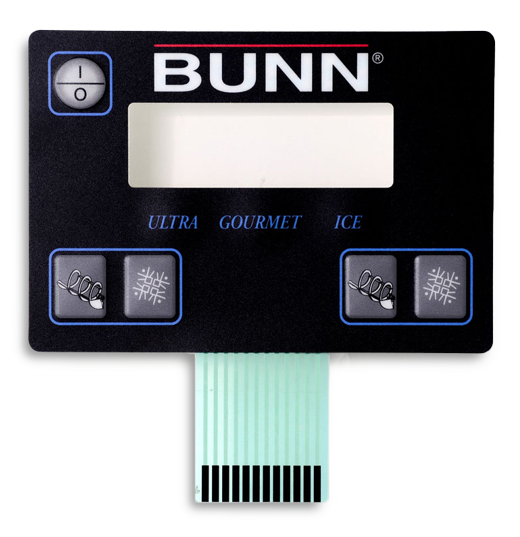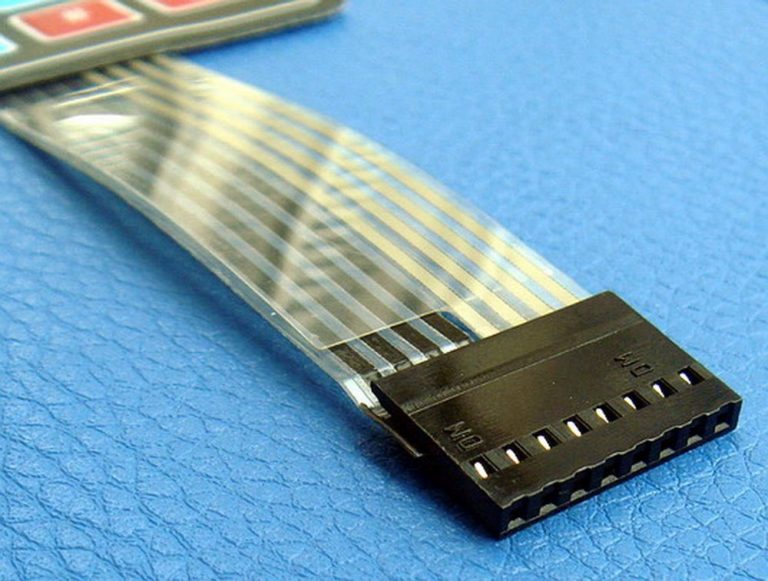Just How Membrane Switches Enable Lightweight and Resilient Interface Solutions
The Ultimate Source on Membrane Switches: Design, Functionality, and Applications
Membrane layer switches offer as an intriguing crossway of layout and performance, playing a crucial duty in modern user interfaces across various fields. As we check out the diverse applications of membrane layer switches, it becomes apparent that their flexibility and resilience are important in environments varying from medical care to customer electronic devices.

Recognizing Membrane Switches
Membrane switches are a kind of customer interface technology widely made use of in various electronic devices, characterized by their thin, adaptable design and performance. These switches contain several layers that consist of graphic overlays, adhesive layers, and circuitry, making it possible for a effective and compact interface for users. They can be found in appliances, clinical devices, and commercial control board, providing a reliable technique for individual interaction.
One of the key benefits of membrane layer buttons is their capability to resist impurities such as dirt and dampness, making them appropriate for settings where longevity is necessary. Their low-profile design allows for smooth combination right into different applications, while the adjustable visuals overlays improve customer experience by supplying clear aesthetic comments. Furthermore, membrane switches can accommodate a selection of modern technologies, such as responsive comments and backlighting, additional enhancing their functionality.
The manufacturing procedure for membrane layer switches normally involves display die-cutting, printing, and lamination methods, making certain precision and uniformity in manufacturing. Overall, membrane changes stand for a versatile and effective solution for modern electronic gadgets, integrating functionality with visual charm in interface style.
Trick Components and Design Elements
A range of essential elements and style aspects come together to develop an efficient membrane switch. At the core, the visuals overlay offers both useful and visual objectives, providing an easy to use interface while securing internal elements from environmental aspects. The choice of materials, typically polyester or polycarbonate, influences resilience and tactile comments.
Under the overlay, the adhesive layer ensures the button adheres safely to the substrate, which can be glass, metal, or plastic. The spacer layer is important, as it keeps the necessary void in between the overlay and the circuit layers, enabling efficient actuation. Membrane Switches. Circuit traces, normally made from conductive ink or adhesive, are printed on a versatile substrate, making it possible for electrical signals to be transferred when stress is applied
Layout considerations likewise include the plan of tactile domes or embossing that give physical responses to the individual, enhancing the total experience. In addition, the layout and spacing of the switches have to be optimized for simplicity of use, ensuring that individuals can browse the user interface without effort. Generally, these components and design elements work synergistically to produce a trustworthy, functional membrane layer switch customized to details applications.
Performance and Operation Device
At the heart of efficient functionality for membrane layer switches lies their operational system, which facilitates customer interaction through a simple yet effective style. These buttons operate the concept of stress activation, where an individual uses force to a designated area of the button (Membrane Switches). This action presses the layers of the switch, finishing an electric circuit that sends a signal to the linked device
The construction normally consists of a leading visuals layer, a sticky spacer layer, and a lower circuit layer, which collectively develop a durable interface. When stress is applied, the top layer breaks down versus the bottom circuit layer, enabling conductive traces to link. This style not just allows clear tactile feedback yet additionally ensures sturdiness and dependability, as the buttons are commonly resistant to dirt and dampness.
Furthermore, the adaptability of membrane layer changes enables integration with different innovations, consisting of LED indications and microcontrollers, boosting their functionality. By giving a streamlined interface that reduces have a peek at these guys mechanical wear, membrane switches over stay a favored option in applications ranging from consumer electronics to commercial tools, guaranteeing optimum efficiency and individual complete satisfaction across varied environments.
Sorts Of Membrane Layer Buttons

Another considerable group is lit up membrane layer buttons, which include backlighting to boost visibility in low-light problems. These buttons are frequently made use of in control panels and dashboards where clear exposure is crucial.
In addition, there are customized membrane layer switches made to meet particular dimensional, visual, and functional needs. These customizations can include special forms, shades, and designs, enabling for smooth integration into various devices.

Applications Throughout Numerous Industries
Just how do membrane buttons boost performance across varied markets? These flexible parts are important to various applications, delivering structured customer interfaces and durable performance. In the medical field, membrane layer switches play an essential duty in tools such as analysis devices and individual tracking systems, where integrity and convenience of cleaning are paramount. Their capability to withstand harsh settings makes them perfect for research laboratory instruments and surgical tools.
In the automotive market, membrane switches are frequently used in dashboards and control board, offering instinctive controls that boost vehicle driver safety and security and ease. The consumer electronic devices sector also takes advantage of their light-weight and customizable attributes, making it possible for sleek designs for smart devices and home appliances.
Moreover, membrane buttons find applications in industrial automation, where they add to reliable machinery procedure and monitoring systems. Their resistance to dust and wetness makes certain capability popular conditions (Membrane Switches). In addition, the food and beverage sector utilizes membrane buttons for equipment control, where hygiene and toughness are important
Verdict
Finally, membrane changes stand for a vital technology in interface innovation, defined by he said their distinct design and functionality. Their essential parts, including visuals overlays and circuit traces, add to their functional effectiveness via pressure activation. The flexibility of membrane visit this site changes promotes their application across varied industries, from clinical devices to consumer electronic devices. This thorough understanding strengthens the value of membrane buttons in improving product functionality and resilience in modern-day technological settings.
Membrane switches offer as an appealing crossway of style and performance, playing a critical function in modern-day customer interfaces throughout various markets.Membrane switches are a kind of customer interface innovation commonly used in different electronic devices, identified by their slim, adaptable style and performance.At the heart of reliable performance for membrane changes lies their operational mechanism, which facilitates user communication via a basic yet effective design. These switches run on the concept of pressure activation, where a user applies force to an assigned location of the switch.In conclusion, membrane layer switches represent a vital development in customer interface modern technology, identified by their special layout and performance.